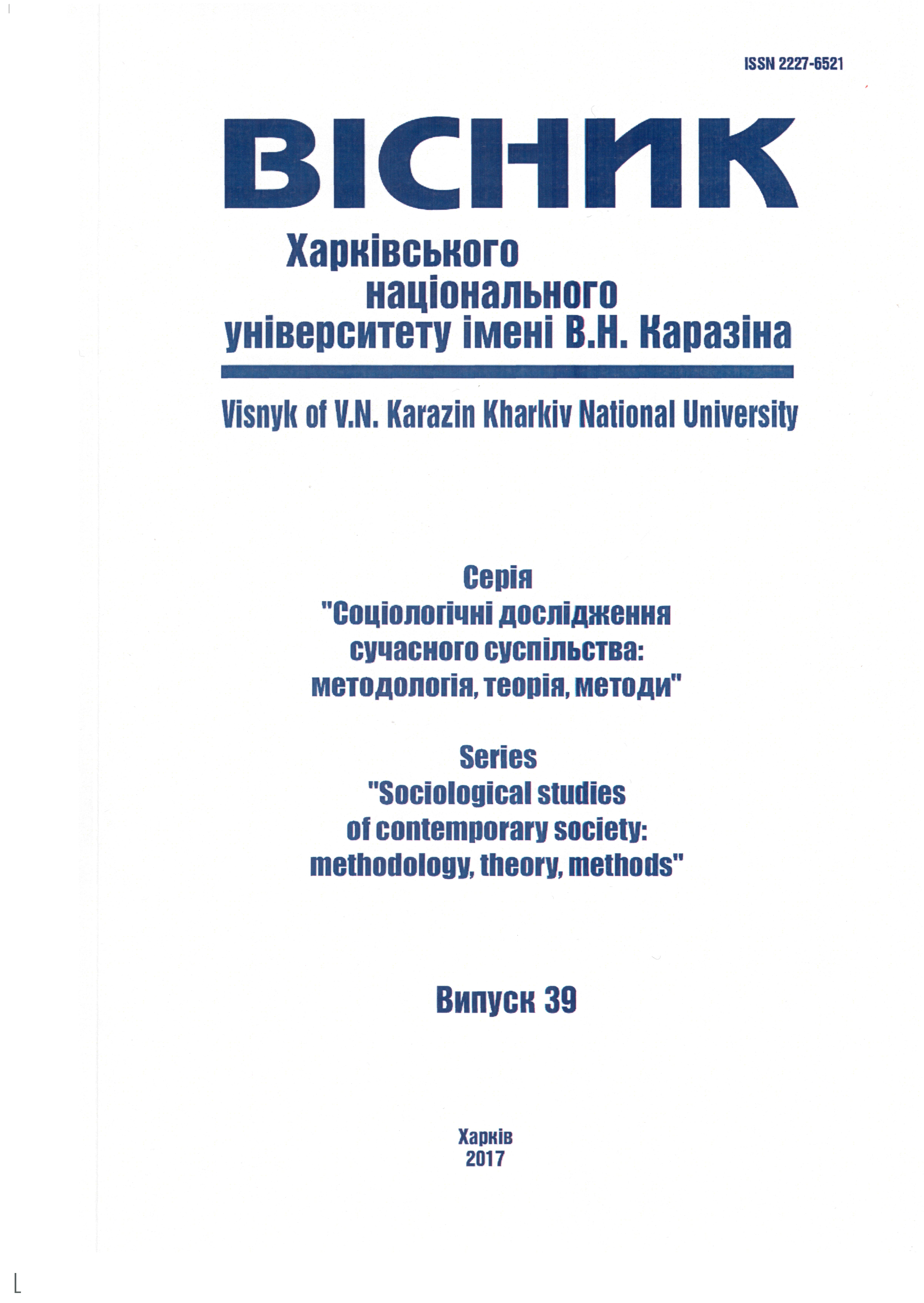Mobile Communications in the Transit Space of Subway: Sociological Essay
Abstract
The article covers the topic of studying urban transport within the framework of sociological discourse. The subway is chosen as a specific type of urban spatial mobility. The text deals with the features of the metropolitan area as a transit space. The artifact and spatial features of the subway as the urban underground space of high mobile mobility are considered. It is inherent in spatial hybridism within the dichotomy of a private vs. public. A special aspect is considered communicative practices of underground users - passengers who use mobile devices while staying in the underground space. The peculiarities of using such device as Smartphone are revealed. In particular, practices and peculiarities of behavioral strategies of underground passengers are described, which fill the time of stay in the underground space by reading, listening to music or audio literature, watching videos, games, etc. Attention is drawn to such a phenomenon as «polite ignorance» or «ethics of indifference». The role of the cultural activities of the metro itself is described, aimed at forming not only the attitude to the metropolitan area, but also to affect the feelings and feelings of passengers in their everyday practices of urban displacements. So, the Subway is a place traditionally considered as a space of loneliness combining physical and cyber-virtual mobility, allowing people to do two things at the same time - moving in the city, staying in the cyber-media field and to be on a communicative connection.
Downloads
References
Лысиков Б. А. Использование подземного пространства : Монография / Б. А. Лысиков, А. А. Каплюхин. – Донецк : Норд-Компьютер, 2005. – 390 с.;
The ethics of indifference: an exchange [Електронний ресурс] / F. Tonkiss, L. Gherardi. – Режим доступу: http://www.lse.ac.uk/sociology/pdf/Tonkiss%20-%20The%20Ethics%20of%20Indifference.pdf;
Tonkiss F. The Ethics of Indifference: Community and Solitude in the City / F. Tonkiss // International Journal of Cultural Studies. – Volume: 6 issue: 3. – Р. 297-311;
Костина Д. А. Феномены архитектурного пространства мегаполисов [Електронний ресурс] / Дарья Александровна Костина // Архитектон: известия вузов. – № 32 (Декабрь). – 2010. – Режим доступу: http://archvuz.ru/2010_4/2;
Запорожец О. Настроить город на свою волну: метрополитен и управление городскими опытами / Оксана Запорожец // Теория моды. Одежда. Тело. Культура № 33 (Осень 2014) . – М. : Новое литературное обозрение, 2014. – С. 143-162;
Запорожец О. Открытие метропользователя: антропология городской подземки [Электронный ресурс] / Оксана Запорожец : препринт WP6/2013/07 / О. Запорожец ; Нац. исслед. ун-т «Высшая школа экономики». – Электрон. текст. дан. (450 КБ). – М. : Изд. дом Высшей школы экономики, 2013. – (Серия WP6 «Гуманитарные исследования»). – 28 с.;
Запорожец О. Особенности транзитных пространств [Електронний ресурс] / Оксана Запорожец // ПостНаука. – Режим доступу: http://postnauka.ru/video/37962;
Корбут А. Как пространство метро влияет на поведение людей? [Електронний ресурс] / Андрей Корбут // ПостНаука. – Режим доступу: http://postnauka.ru/faq/44980;
Zaporozhets О. Becoming a Subway User: Managing Affects and Experiences [Електронний ресурс] / Oksana Zaporozhets. – Режим доступу: http://papers.ssrn.com/sol3/papers.cfm?abstract_id=2433951





